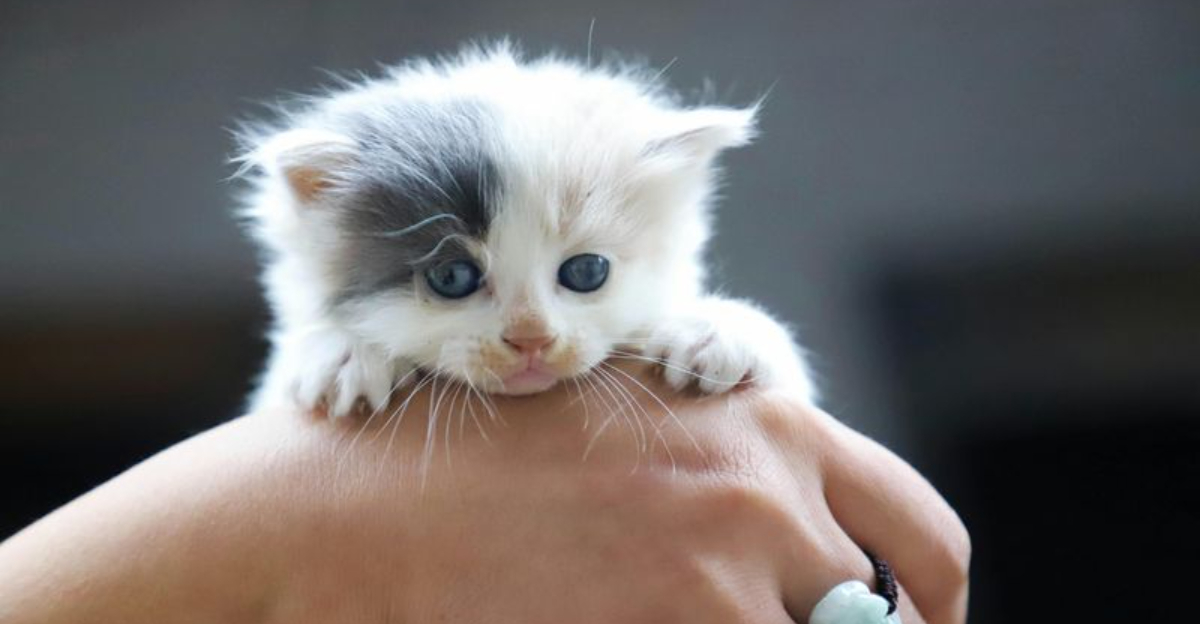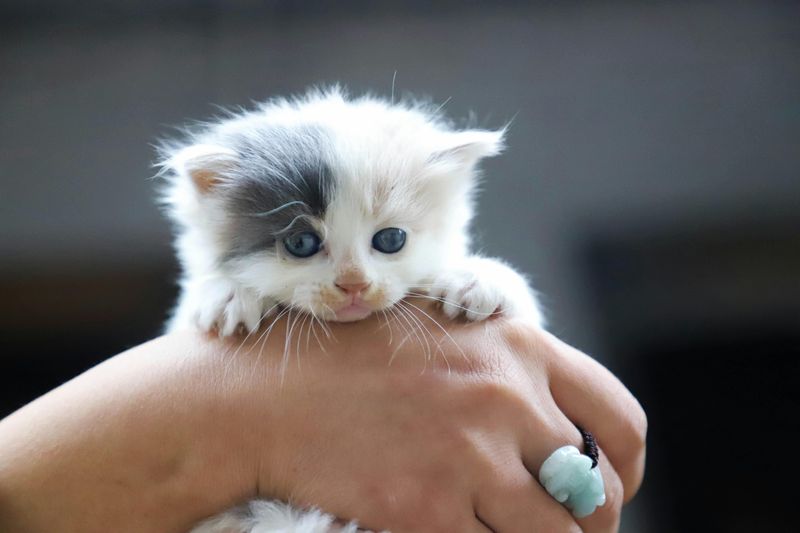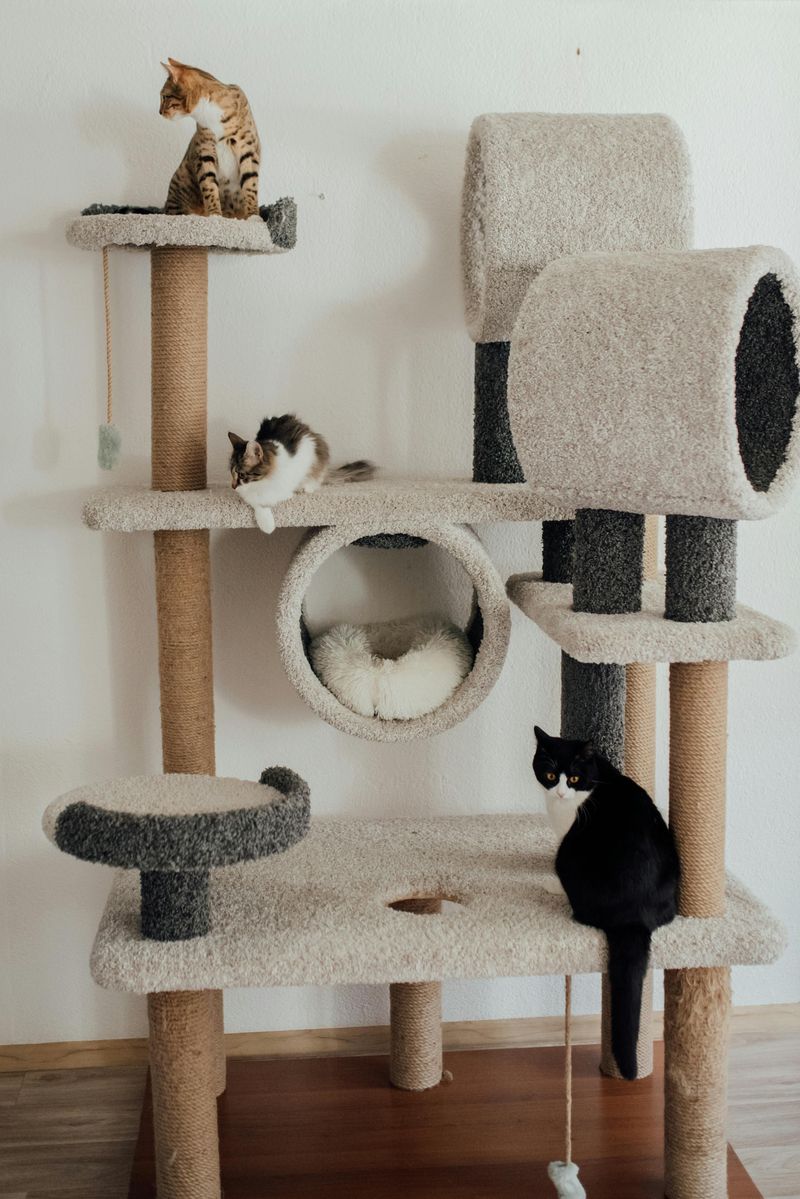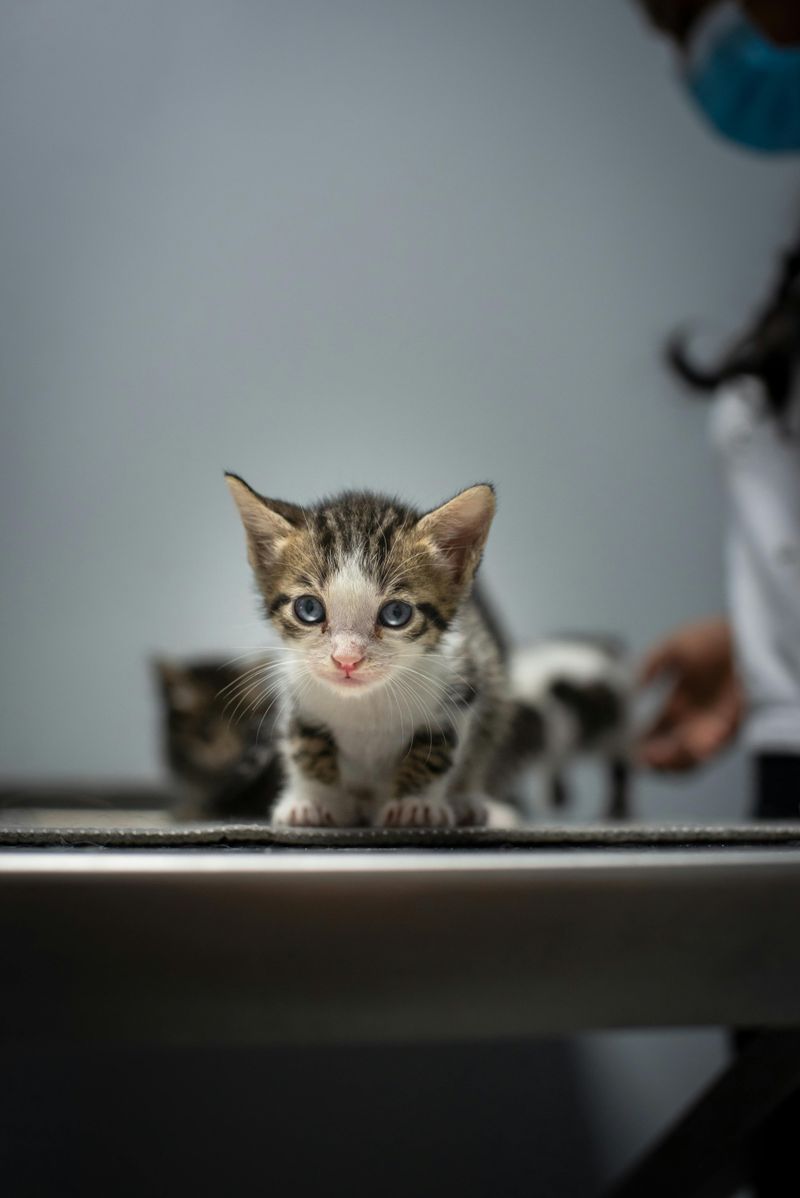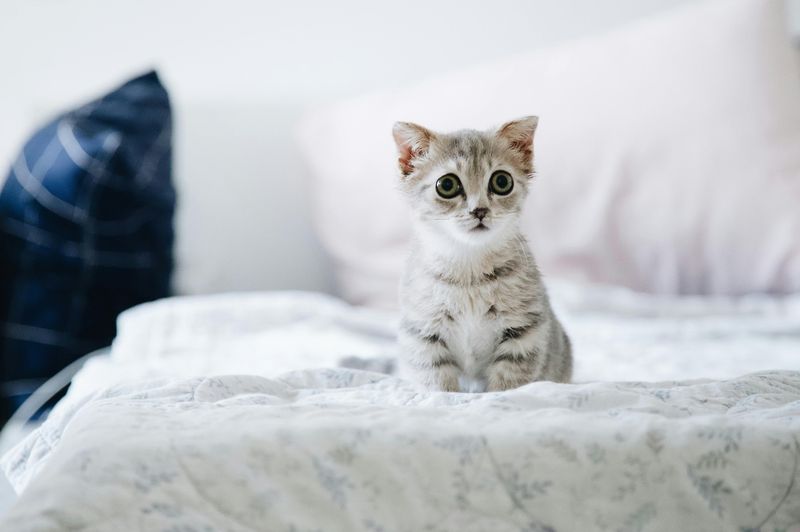📖 Table of Content:
- 1. Early Socialization Creates Lasting Confidence
- 2. Create a Climbing Paradise
- 3. Play Sessions That Build Hunting Skills
- 4. Positive Reinforcement Training Builds Self-Esteem
- 5. Gentle Handling Prepares for Veterinary Care
- 6. Create a Predictable Environment with Safe Spaces
- 7. Controlled Exposure to Novel Experiences
- 8. MISTAKE: Punishing Your Kitten for Normal Behaviors
- 9. MISTAKE: Forcing Interactions When Kitten Is Fearful
- 10. MISTAKE: Inconsistent Routines and Expectations
- 11. MISTAKE: Isolating Your Kitten From Household Activity
- 12. MISTAKE: Overlooking Signs of Stress or Anxiety
Bringing home a tiny ball of fur comes with big responsibilities. How your kitten develops during those crucial early months shapes their entire adult personality.
Confident cats are happier, healthier, and better companions, while fearful felines often struggle with behavioral issues throughout their lives. Whether you’re a first-time cat parent or looking to do better with your new kitten, these proven strategies and common pitfalls will guide you toward raising a self-assured, well-adjusted cat.
1. Early Socialization Creates Lasting Confidence
Kittens have a critical socialization window between 2-7 weeks of age. During this golden period, positive exposure to different people, gentle handling, and various household sounds helps wire their developing brains for confidence rather than fear.
Many cat behaviorists recommend introducing your kitten to at least 100 different people during their first few months. This doesn’t mean overwhelming them – just brief, positive interactions that teach them humans are safe.
Cats who miss proper socialization often grow up to be skittish and may hide whenever visitors arrive. The good news? Even older kittens can improve with patient, consistent exposure to new experiences.
2. Create a Climbing Paradise
Vertical space isn’t just fun for kittens – it’s essential for their confidence development. Cats naturally seek high perches to survey their territory and feel secure. A kitten who can retreat upward when feeling threatened will develop better coping skills.
Cat trees, shelves, and climbing posts allow your kitten to practice athletic skills while building environmental confidence. Position these items near windows for added enrichment through bird watching and sunbathing opportunities.
Remember that climbing confidence transfers to general confidence. A kitten who masters challenging vertical terrain develops problem-solving abilities and physical self-assurance that extends to other aspects of their life.
3. Play Sessions That Build Hunting Skills
Regular interactive play isn’t just about burning energy – it’s building your kitten’s natural hunting confidence. Wand toys that mimic prey movements trigger your kitten’s predatory sequence: stalk, pounce, grab, and bite. Mastering these skills creates a deeply satisfied, confident cat.
Avoid using hands or feet as toys! This teaches kittens that attacking human body parts is acceptable. Instead, rotate different toys to maintain interest and challenge different hunting styles.
Aim for at least two 10-15 minute play sessions daily. End each session by letting your kitten “catch” the prey, which provides the psychological reward they need to feel successful and competent in their environment.
4. Positive Reinforcement Training Builds Self-Esteem
Contrary to popular belief, kittens are highly trainable! Using treats, praise, and clickers to reward desired behaviors teaches kittens they can influence their environment through their actions – a cornerstone of confidence.
Start with simple behaviors like coming when called, sitting on cue, or touching a target stick with their nose. Keep sessions short (3-5 minutes) and always end on a successful note to build positive associations.
Training also strengthens your bond while providing mental stimulation. The problem-solving aspect of figuring out what earns rewards develops cognitive abilities and creates a kitten who approaches new challenges with enthusiasm rather than fear.
5. Gentle Handling Prepares for Veterinary Care
Confident cats tolerate necessary handling for grooming and medical care without extreme stress. Touch your kitten’s paws, ears, mouth, and belly regularly while providing treats to create positive associations.
Practice placing your kitten in their carrier when NOT going to the vet. Feed treats inside, add comfortable bedding, and leave it open as a safe space rather than only appearing before stressful car rides.
Gradually introduce brushing, nail trimming, and teeth examination as part of your routine. A kitten who learns these experiences are normal and not threatening will face future veterinary visits with much less anxiety, making healthcare easier throughout their life.
6. Create a Predictable Environment with Safe Spaces
Kittens thrive on routine and predictability. Consistent meal times, play sessions, and sleeping arrangements help them feel secure in understanding their world. This predictability forms the foundation for confidence to explore and adapt.
Every kitten needs multiple hiding spots where they can retreat when overwhelmed. Covered beds, cardboard boxes, and cat tunnels provide security. The key is respecting these spaces – never force a kitten out of their safe zone.
Gradually expand your kitten’s territory room by room rather than overwhelming them with full house access immediately. This controlled introduction to new spaces allows them to build confidence at their own pace while maintaining a sense of security.
7. Controlled Exposure to Novel Experiences
Confident cats adapt well to changes in their environment. Introduce your kitten to new experiences gradually and with positive associations. For example, before having guests over, place treats in areas where visitors will sit.
Carriers, car rides, vacuum cleaners, and other potentially scary things should be introduced slowly. Start with the item turned off and reward calm behavior, then gradually increase exposure while continuing positive reinforcement.
Keep a “confidence journal” tracking your kitten’s reactions to new experiences. This helps you identify areas needing more work and celebrates progress. Remember that each kitten has a unique personality – some naturally adapt quickly while others need more time and patience.
8. MISTAKE: Punishing Your Kitten for Normal Behaviors
Spraying water, yelling, or physically disciplining kittens doesn’t teach them what to do—it only creates fear and damages trust. Kittens scratching furniture or climbing curtains aren’t being “bad”—they’re expressing natural instincts that need appropriate outlets.
Instead of punishment, redirect unwanted behaviors to acceptable alternatives. When your kitten scratches furniture, gently move them to a scratching post. Make the post more appealing with catnip and praise when they use it.
Remember that punishment creates anxiety, which often leads to more problematic behaviors like inappropriate elimination or aggression. A kitten who fears consequences becomes hesitant to try new things – the opposite of confidence.
9. MISTAKE: Forcing Interactions When Kitten Is Fearful
Picking up a hiding kitten or forcing them to meet new people creates lasting negative associations. When a kitten retreats, they’re communicating they feel unsafe, and violating this boundary erodes trust and confidence.
Patience wins with fearful kittens. Sit quietly near their hiding spot, offering treats without demands. Let them approach on their terms, which might take days or even weeks, depending on their history.
Many well-meaning cat parents rush this process out of excitement or concern. However, forced socialization backfires dramatically. A kitten allowed to set their own pace for interactions will ultimately develop far more confidence than one who learns their boundaries won’t be respected.
10. MISTAKE: Inconsistent Routines and Expectations
Cats are creatures of habit who rely on predictability for confidence. Constantly changing feeding schedules, litter box locations, or house rules creates anxiety because your kitten can’t establish reliable patterns of what to expect.
Particularly damaging is inconsistent enforcement of rules – allowing your kitten on counters sometimes but scolding them other times creates confusion. They never learn what’s truly acceptable, leading to hesitation and uncertainty in their environment.
Family members should agree on rules and routines for your kitten. When everyone responds consistently to behaviors, your kitten quickly learns boundaries and develops confidence within this predictable framework. Remember that confidence comes from understanding their world, not from constantly adapting to changing expectations.
11. MISTAKE: Isolating Your Kitten From Household Activity
Keeping kittens confined to a single room long-term or excluding them from family gatherings prevents critical socialization opportunities. While brief separation during adjustment periods is helpful, extended isolation creates cats who feel insecure in active household settings.
Everyday noises like dishwashers, TVs, and conversations should become normal background experiences during kittenhood. Gradually include your kitten in calm family activities, providing treats and positive attention during these exposures.
Many people mistakenly “protect” kittens from normal household stimulation. However, a kitten raised in artificial quiet will become overwhelmed by normal life sounds later. The confident cat is one who learned early that household activities are safe, predictable parts of their environment.
12. MISTAKE: Overlooking Signs of Stress or Anxiety
Subtle signs of kitten stress often go unnoticed until they escalate into serious problems. Dilated pupils, flattened ears, tense body posture, and excessive grooming are early indicators that your kitten feels anxious, not “just being a cat.”
Inappropriate elimination outside the litter box frequently signals stress rather than spite. Similarly, sudden hiding or aggression typically indicates fear, not personality changes. Recognizing these communications early allows you to address the underlying cause.
Keep a behavior journal noting any unusual patterns. Did changes occur after environmental shifts like new furniture, visitors, or schedule adjustments? Addressing anxiety promptly prevents it from becoming ingrained, helping maintain your kitten’s developing confidence rather than allowing fear responses to become habitual.
